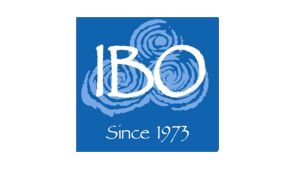A Message from the IBO President, Dr. Janet L. Walsh

In today’s rapidly shifting economic landscape, uncertainty is affecting businesses across the US, Ireland, and the World. At the Irish Business Organization (IBO), we want to remind you: you’re not navigating this alone. The IBO exists for moments like these—offering support, insight, and connection when it matters most.
Our members bring deep, real-world experience leading companies of all sizes through political disruptions, financial volatility, and complex HR transitions. If your organization is navigating through unfamiliar territory, the IBO is your gateway to new markets, strategic partnerships, capital opportunities, and a global network of seasoned professionals.
IBO members include senior executives, economists, legal experts, investors, diplomats, government advisors, marketers, and human capital specialists—ready to share knowledge and collaborate with you.
Looking for perspective on evolving markets? Need guidance from someone who’s been through it before? Connect with us. The IBO is here to provide the insights and support that drive smart decision-making.
To get started, we encourage you to watch Sean Lyman’s expert analysis on the latest tariff developments—available below—to better understand the economic forces at play.
And as Winston Churchill once said, “You can always count on Americans to do the right thing—after they’ve tried everything else.” Let’s lead with resilience, together.
https://www.dropbox.com/scl/fi/kr1pg04wpvd2ai5j2ukeq/Sean-Lydon-Trade-Policy.mp4?rlkey=02jh9otc2836cigv9zw42hcjn&st=kew4epgj&dl=0





 Consider how you develop a competitive financial and operational advantage in your human capital. Here is a great article from McKinsey, well documented and food for thought. If you want more ideas for increasing your EBITDA in HR operations, let us know and our global, peer reviewed HR and Finance executives will brainstorm with you about your specific challenges.
Consider how you develop a competitive financial and operational advantage in your human capital. Here is a great article from McKinsey, well documented and food for thought. If you want more ideas for increasing your EBITDA in HR operations, let us know and our global, peer reviewed HR and Finance executives will brainstorm with you about your specific challenges.
The new ISO Guideline 30414 contains key organizational metrics that help executive leadership identify the costs, benefits, and outcomes from HR operations. If you are a portfolio manager or HR leader, you can show your financial executives just how important good HR management practices are to increasing the EBITDA value of your businesses. For example:
• Assume the company has: 250 employees
• Employee annual turnover: 16% (national average)
• TOTAL cost of replacing an employee is: 0.75x annual wages
• Annual wage is: $77,500 (national average, source: MarketWatch)
Let’s assume that BPHR does an audit of your HR practices and makes recommended changes leading to a modest reduction in employee turnover to 10%.
The annual savings for not replacing the 15 employees would be:
15 employees x 0.75 x. $77,500 = $872,000 added to EBITDA
The equity value would then be:
$872,000 x 7 = $6.1M, or an additional 11% in equity value.
This is just the beginning. BPHR focuses on increasing financial performance through Human Resources operations. Our team of financial and HR executives will answer your questions and help you uncover more ways to increase EBITDA.
See more of what we do at
https://lnkd.in/erQgDkBM.
Contact us at walsh@birchtreeglobal.com for a discussion of the possibilities.
Thank you, James Calver, for the insights!